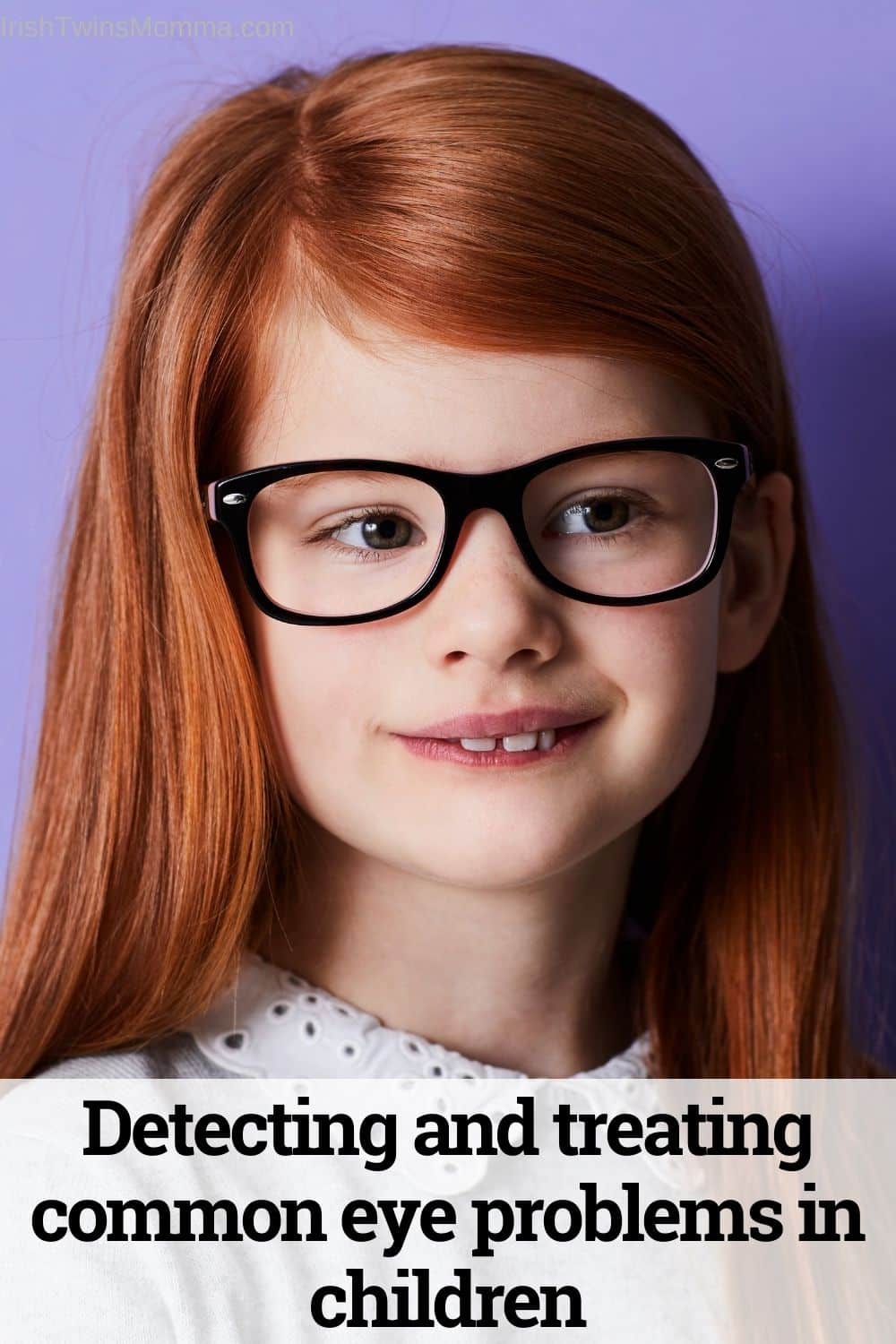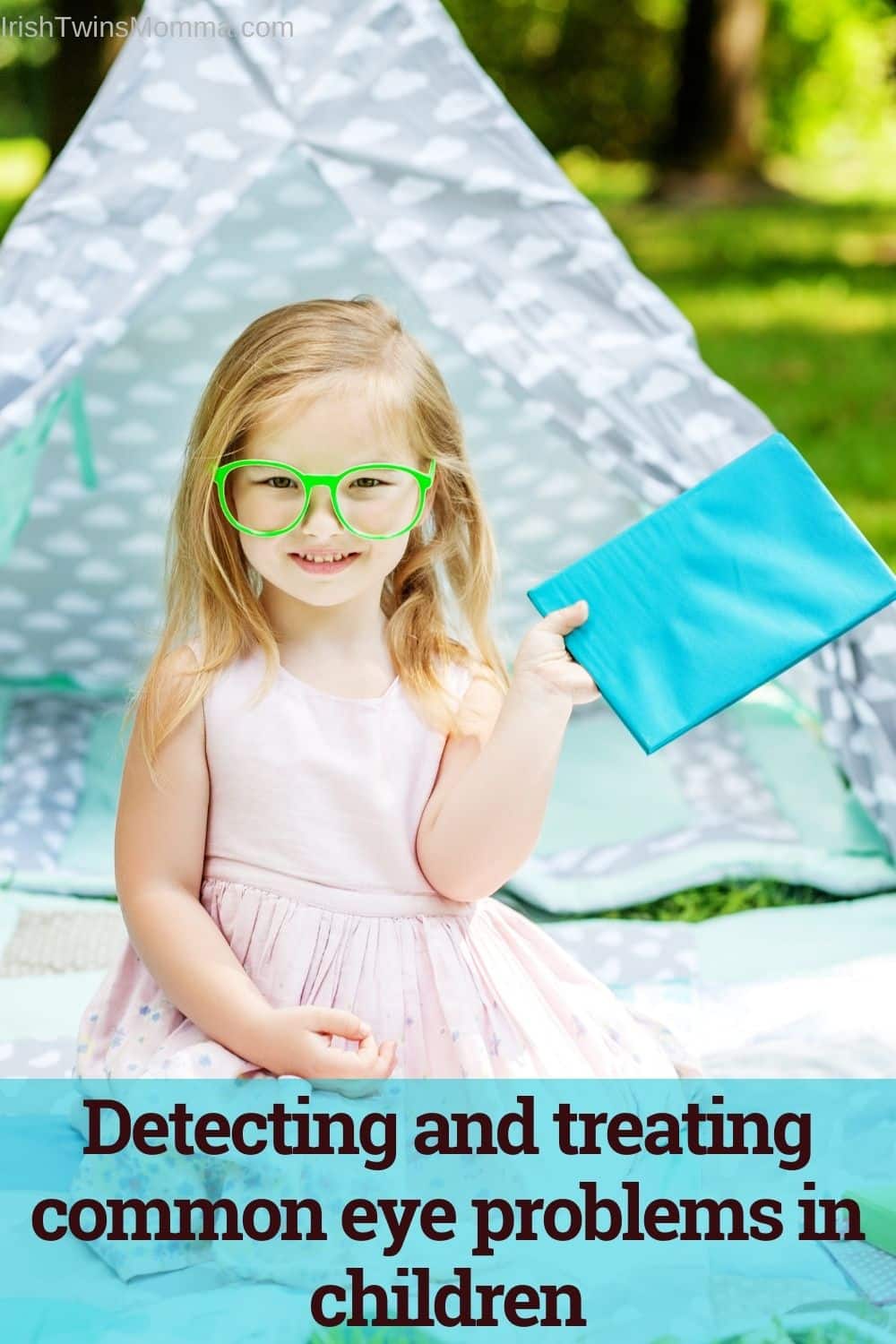This post contains affiliate links. If you click and buy, I may make a commission, at no cost to you. See my disclosure policy for more information.
Studies suggest that nearly 6.8% of children younger than 18 years suffer from vision-related problems. Vision is crucial to learning as well as the child’s self-confidence too. And hence, hampered vision during the growing years can affect the child’s overall development in ways more than one. Children’s eye care is an integral responsibility of parents to help

Common eye problems in children
- Amblyopia (Lazy Eye)
Also known as lazy eye in children, this is a condition where both eyes do not develop normal vision. Due to this, an abnormality is caused in the brain’s visual region, and it impacts the child’s visual acuity. If detected early, this condition responds very well to treatment.
- Refractive errors (Farsightedness, Nearsightedness, Astigmatism)
This is the most common form of visual error experienced in children. Farsightedness is when the child can see objects at a distance but has poor vision of nearby objects. Nearsightedness is the exact opposite. Astigmatism is a condition where the cornea has an imperfect curve which causes it to focus unevenly on two objects instead of one. Regular kids’ eye exams help identify these conditions at an early stage and can be easily corrected with spectacles.
- Childhood Tearing/Epiphora
This is a condition where the child experiences excessive tearing. It is usually detected at birth but may also be developed later. The cause of this condition is usually due to the blockage of the child’s tear drainage system. This condition is generally treated with eye sac massage and teardrops. However, if the condition persists, it may require surgical intervention.
- Double Vision
When a child starts seeing double positions of objects, it could be due to a condition called diplopia or double vision. The cause of this condition can be many. And the object which is seen double can be displaced horizontally, vertically, or even diagonally at times. Treatments include prism glasses and strabismus surgery.
- Genetic Eye Disease:
Certain vision problems are genetic. If the child inherits a genetic abnormality, it is essential to detect this condition early.
- Pediatric Cataract:
A cataract is a condition where the lens becomes opaque and inhibits clear vision. Cataracts usually occur at an older age due to the oxidation process that is part of the natural aging process. However, they can sometimes occur in children too. Symptoms include a white, opaque area in the pupil or misalignment of vision. Early detection can help restore vision in children. Significant impairment of vision may need surgery.
- Pediatric Glaucoma
Glaucoma includes a condition where the pressure inside the eye is higher than it should be. This pressure can damage the optic nerve. And if ignored, it can also cause permanent loss of vision. Although rare, always be vigilant of your child’s eye for symptoms like tearing, frequent blinking, sensitivity to light, a cloudy cornea, etc.
- Pediatric Ptosis (Drooping Eyelid)
The drooping eyelid condition can take place in adults as well as children, when children develop this condition, it is developed during childhood or even congenital. Ptosis occurs when the eye muscles have become weak, and as a result, they start drooping. If untreated, this condition can lead to other complications like astigmatism, amblyopia, or sometimes even a permanent loss of vision.
- Strabismus (Crossed Eyes)
Strabismus is a case of misalignment of the eyes. The eyes may be tilting upwards, sideward, or downwards. It can occur in both children and adults. A patient can often experience conditions like diplopia, blurry vision due to astigmatism, or even amblyopia due to strabismus. Treatments for this condition may include spectacles, prism surgery, Botox injections, or eye patching therapy.
- Retinopathy of Prematurity (ROP)
Sometimes, premature infants may develop a condition where the retina’s blood vessels develop abnormally. ROP is a progressive disease starting with mild to severe visual impairment. If detected early, the treatment can have spontaneous effects. Severe vision alteration may even need laser treatment by injecting medicines into the eyes.

Symptoms of eye problems in children
- Indoor and outdoor Light sensitivity
- Avoiding activities that involve coloring, puzzles, and strong details
- Covering one or both eyes
- Droopy or misaligned
- Looking at the television or books too closely
- Squinting or overcorrecting their eyes when looking at objects
- Frequent eye rubbing
- Turning one or both eyes in and out
- Tilting their head too often
- Clumsy behavior, lack of coordination
How can you protect your child’s sight?
Protecting your young one’s eyesight requires carefulness right from the conceiving stage.
- Eat the right food. Nutritious meals like fruits, vegetables, and nuts greatly benefit the child’s eye development.
- Be vigilant of unusual developments in your child’s behavior if you notice such behavior as blinking the eyes too often, rubbing the eyes, etc.
- Keep the child away from digital screens as far as possible to avoid any digital eye strain.
- Bring toys that aid in the visual development of the child.
- Protect your child from harmful UV radiation when outside.
- Give your child appropriate protective gear while playing any sport so that it doesn’t harm his eyes.
- Have your infant’s eyes examined regularly.
Guest Post by Aaron Barriga

Aaron Barriga is the online marketing manager for Insight Vision Center and an argumentative essay writer at Studyclerk. With a knack for understanding medical procedures and an interest in eye and vision health, Aaron loves to share what he knows and what he learns. He blogs to inform readers about the latest eye care technology and other topics related to eye care, especially LASIK. Aaron loves collecting coasters from the different bars and restaurants he visits during his travels.

Leave a Reply